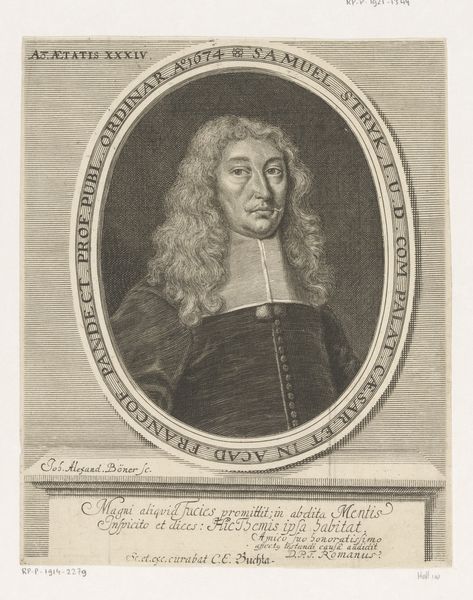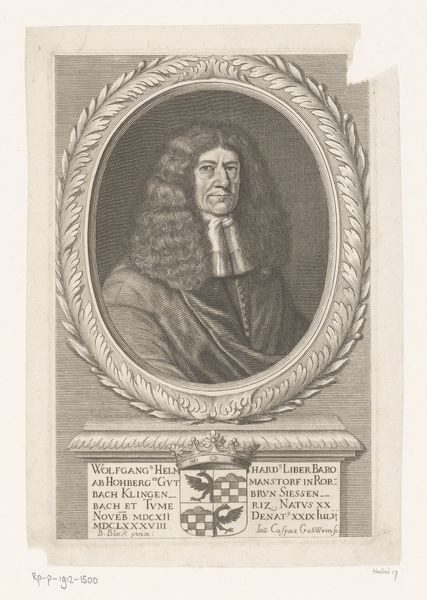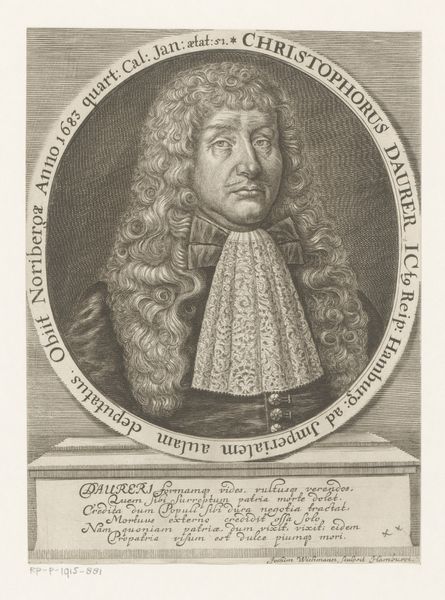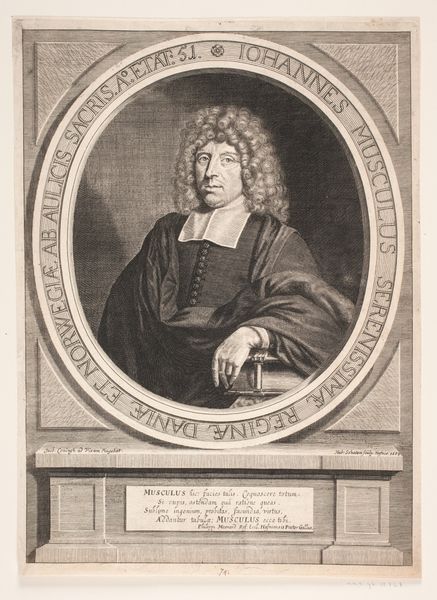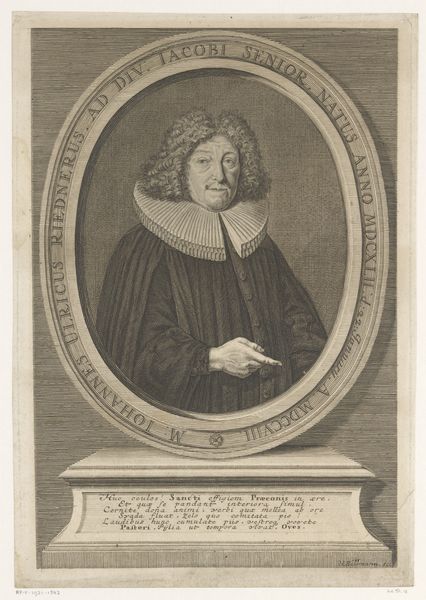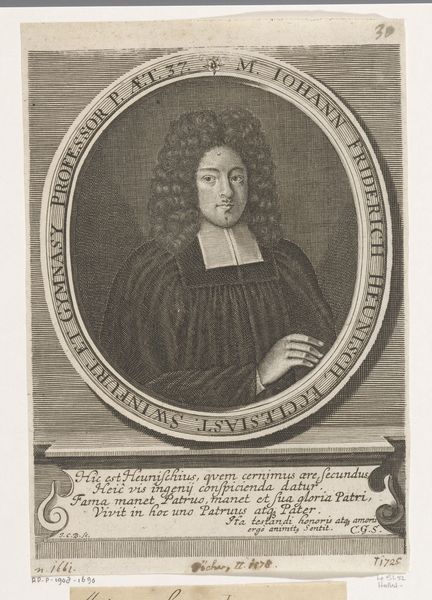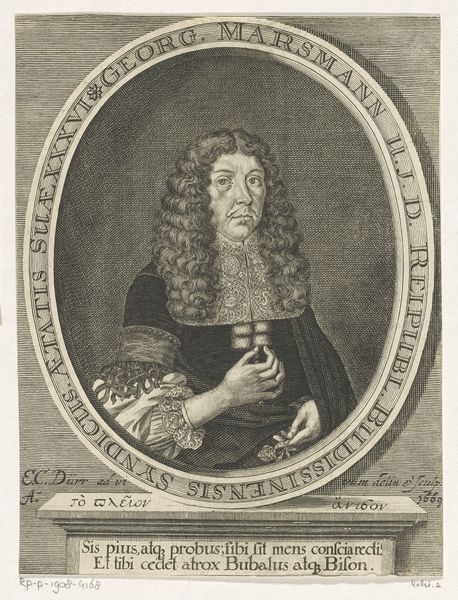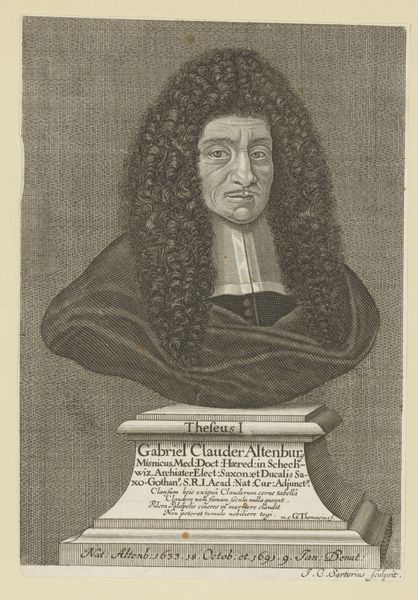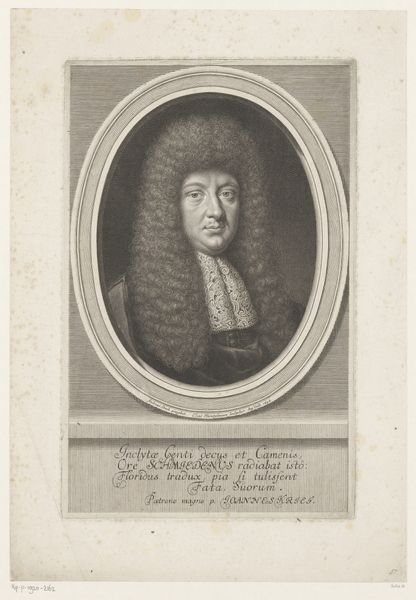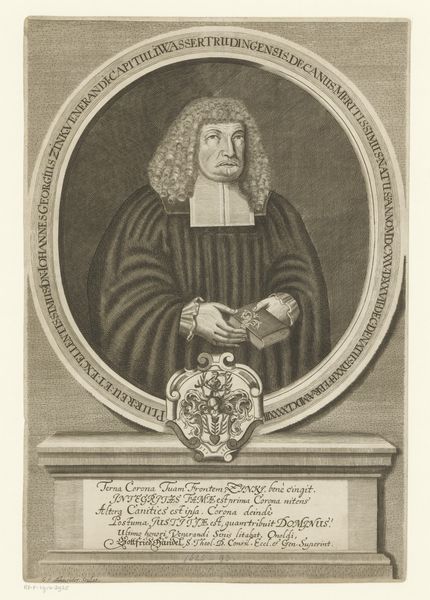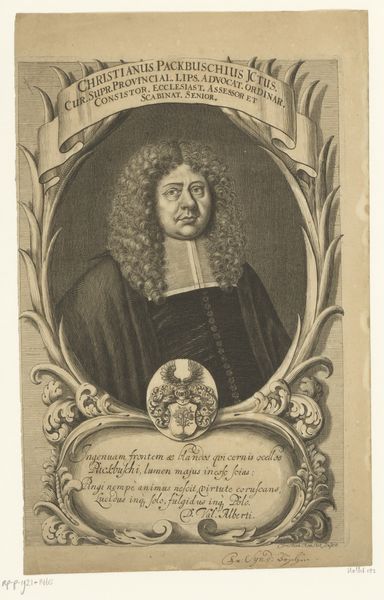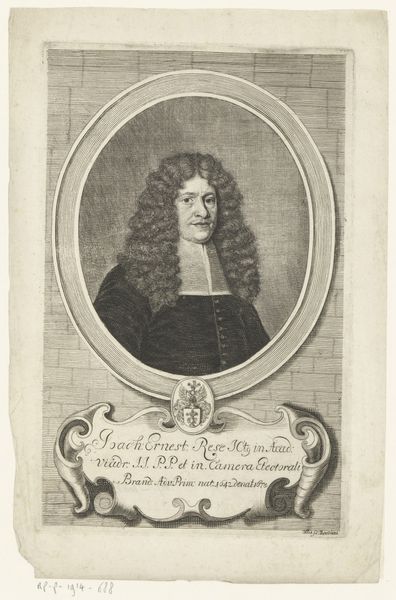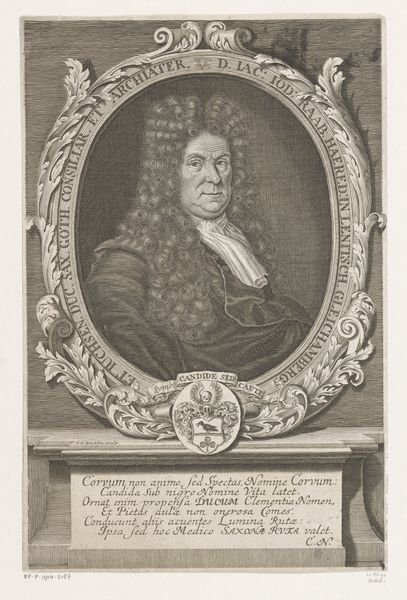
engraving
#
portrait
#
baroque
#
old engraving style
#
portrait reference
#
history-painting
#
engraving
Dimensions: height 190 mm, width 155 mm
Copyright: Rijks Museum: Open Domain
Curator: Standing here before this engraving, "Portrait of Johann Friedrich Rhetz," likely created between 1674 and 1690, I'm immediately struck by the imposing formality. The elaborate wig, the crisp, almost aggressively starched ruff, the overall rigidity—it's all designed to convey a sense of power. Editor: Absolutely, that rigidity is palpable, but I see more than just power. There's a vulnerability there too, in the slightly weary eyes. It reminds me of the expectations placed on men of that era, the pressure to uphold a specific image of competence and authority, even if it’s at odds with their inner lives. Curator: That tension is precisely what interests me. Rhetz was not just any man; his position, meticulously inscribed in the oval framing the portrait, declares him as a Counselor of Brandenburg. This engraving, created by Johann Alexander Böner, existed within a system of patronage and prestige. Editor: And think about the socio-political dynamics inherent in portraiture at this time. This image would have circulated among a specific elite, reinforcing a hierarchy not just through the representation of Rhetz, but also through its very consumption. Consider, too, that Rhetz is being actively commemorated here. Curator: Precisely, we see the engraving as an explicit statement, an item of prestige to celebrate Rhetz himself, in all of his stature. Think about how the lines of the engraving form the clothing of Rhetz—a very real person whose image becomes further stylized by the artist who actively immortalized his existence. Editor: That conscious, active memorialization—that's important. And what fascinates me are the layers of artifice at play. The wig isn’t just a wig; it’s a performative statement about status, education, even allegiance to cultural trends. We're witnessing someone crafting their own narrative, but also being confined to one by those in charge, with expectations on his performance. Curator: The Baroque aesthetic lends itself beautifully to that kind of self-construction. The ornamentation becomes integral to conveying meaning, solidifying societal order and demonstrating class, privilege, and a person’s direct role in social structures. It's powerful in its own way to commemorate real existence. Editor: Looking at this, it's clear that art like this becomes a powerful lens through which we can explore ideas about masculinity, societal roles, and the deliberate construction of identity within a specific historical framework, but with real tangible social consequence. Curator: It’s a potent reminder of art's role in shaping not just how we see the world, but also how we perform within it. Editor: And how even then, as now, identity remains complex, a blend of both assertion and constraint.
Comments
No comments
Be the first to comment and join the conversation on the ultimate creative platform.

